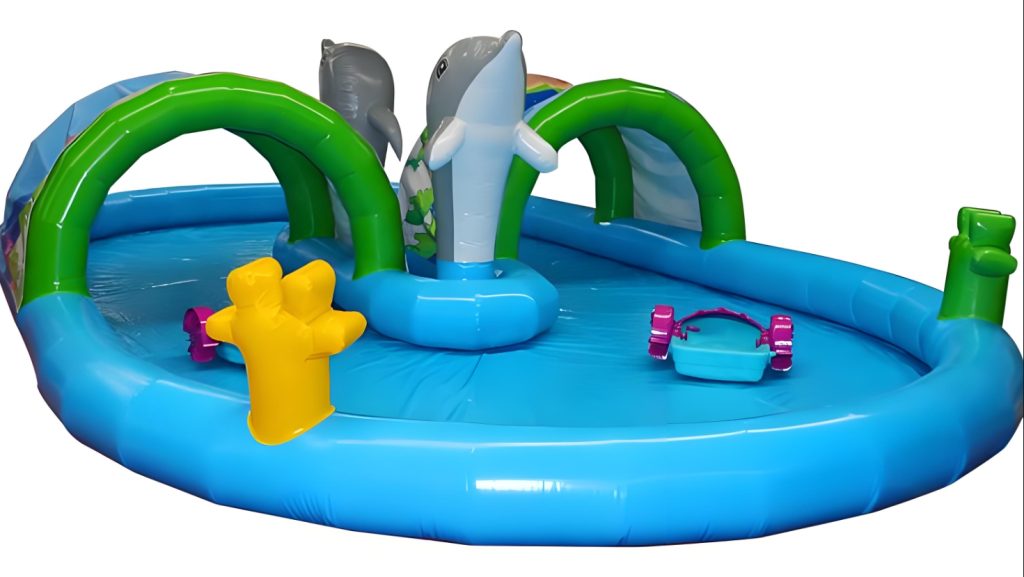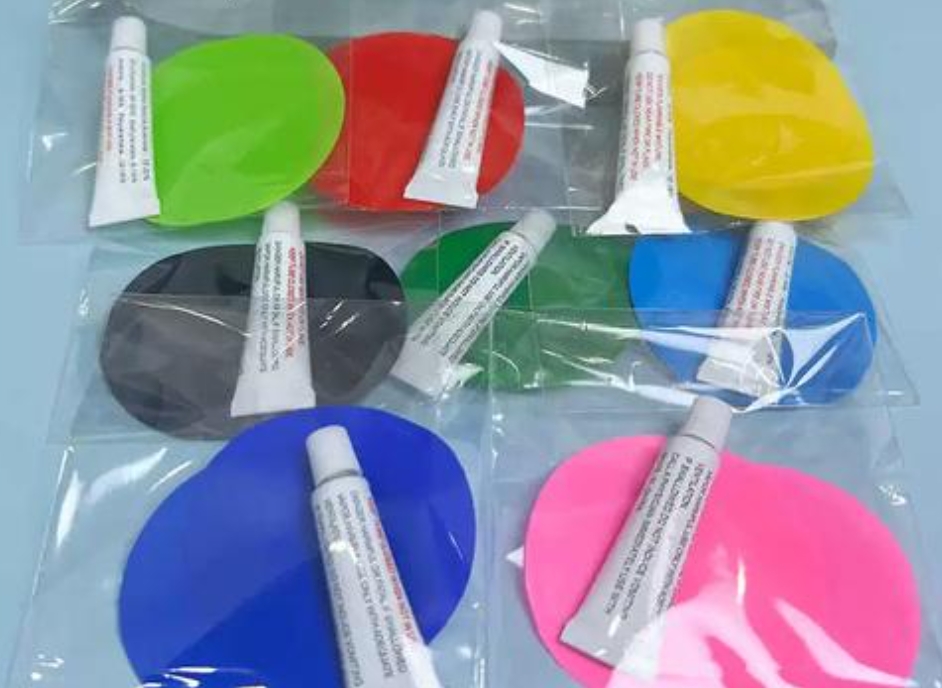Detailed Repair Guide for Inflatable Pools (2025 Customer Edition)
Applicable scenarios: PVC/TPU inflatable pools, bracket swimming pools, etc.

I. Preparation
Tools and Materials List
Repair materials: PVC/TPU special repair sheet (size is more than 3 times the damaged area, round shape is recommended), PVC special glue (water-resistant type), high-viscosity repair tape, fiber cloth (for reinforcement).
Auxiliary tools: soft brush, neutral detergent, marker (marking leaks), hot air gun (heat-sealing repair), heavy objects (compacting repair sheets).
Pretreatment steps
Drain the water and gas in the pool to ensure that the repair surface is completely dry.
Clean the damaged area and remove oil and dust with a neutral detergent.
Detect leaks: Apply soapy water or shower gel and observe the location of bubbles (prioritize detection of vulnerable areas such as seams and valves).
- Repair steps by scenario
Scenario 1: Pinhole or small air leakage (<1cm) Tape quick repair method Cut the repair tape to cover the leak point and the surrounding 1cm area. Tear off the adhesive backing and stick it together, scrape it with a hard card to remove bubbles, let it stand for 2 hours, and then inflate it for testing. Scenario 2: Cracks or scratches (1-5cm) Glue + repair sheet method Apply PVC glue evenly on both sides of the crack (thin layer coverage). Stick the repair sheet (the color is the same as the pool) preheated to 60℃ and compact it with a roller press or hard card. Cover with heavy objects (such as books) and let it stand for more than 6 hours. Scenario 3: Seam debonding or heat-sealed seam tearing Heat-sealed repair method Clean the residue at the debonding place and lightly polish the bonding surface with sandpaper. Apply two coats of glue, the overlap width is ≥3cm, and heat the hot air gun to 120℃ and then roll and weld it. Scenario 4: Large area damage (>10cm)
Multi-layer reinforcement method
Sew the torn edges to make them flat, cover with fiber cloth, and apply glue to penetrate the gaps
Add a patch to the outer layer, and weld the edges with a heat sealer (requires professional operation)
If the damaged area exceeds 10%, it is recommended to return to the factory for replacement parts
III. Post-repair inspection and maintenance

Air tightness verification
Inflate to rated pressure and observe the pressure drop over 24 hours (normal loss ≤5%)
Test the repaired area with soapy water for the second time to confirm that there are no bubbles
Long-term maintenance recommendations
Daily inspection: Check the seams, valves, and high-frequency friction areas every month
Cleaning specifications: Wipe with a soft brush + clean water, avoid strong acid/alkaline solvents
Storage requirements: Fold after complete drying and store in a cool and ventilated place (temperature ≤35℃, humidity ≤60%)
- Key points
Material matching: TPU patch cannot be used for PVC material (elasticity difference leads to degumming).
Glue use: To avoid glue overflow, the glue needs to be half-dried (about 1 minute) before bonding.
Emergency treatment: The formal repair must be completed within 72 hours after the temporary repair (the tape is prone to aging).
Safety protection: Wear high-temperature resistant gloves during heat sealing to avoid burns.
Following this guide can extend the pool’s service life by 3-5 years. For complex repairs, it is recommended to contact the manufacturer or certification team.
